From childhood to adulthood, we've all had friends and family members who've suffered from gout. When an acute attack strikes suddenly in the middle of the night, the joints feel a searing, volcanic pain.
Few animals can truly feel this pain.
Because gout is almost exclusively suffered by humans in nature.
The reason lies in evolution indeed.
Gout (metabolic arthritis) is essentially an irritating arthritis caused by excessive uric acid in the blood, which crystallizes in the joints and causes the recurrent attacks.
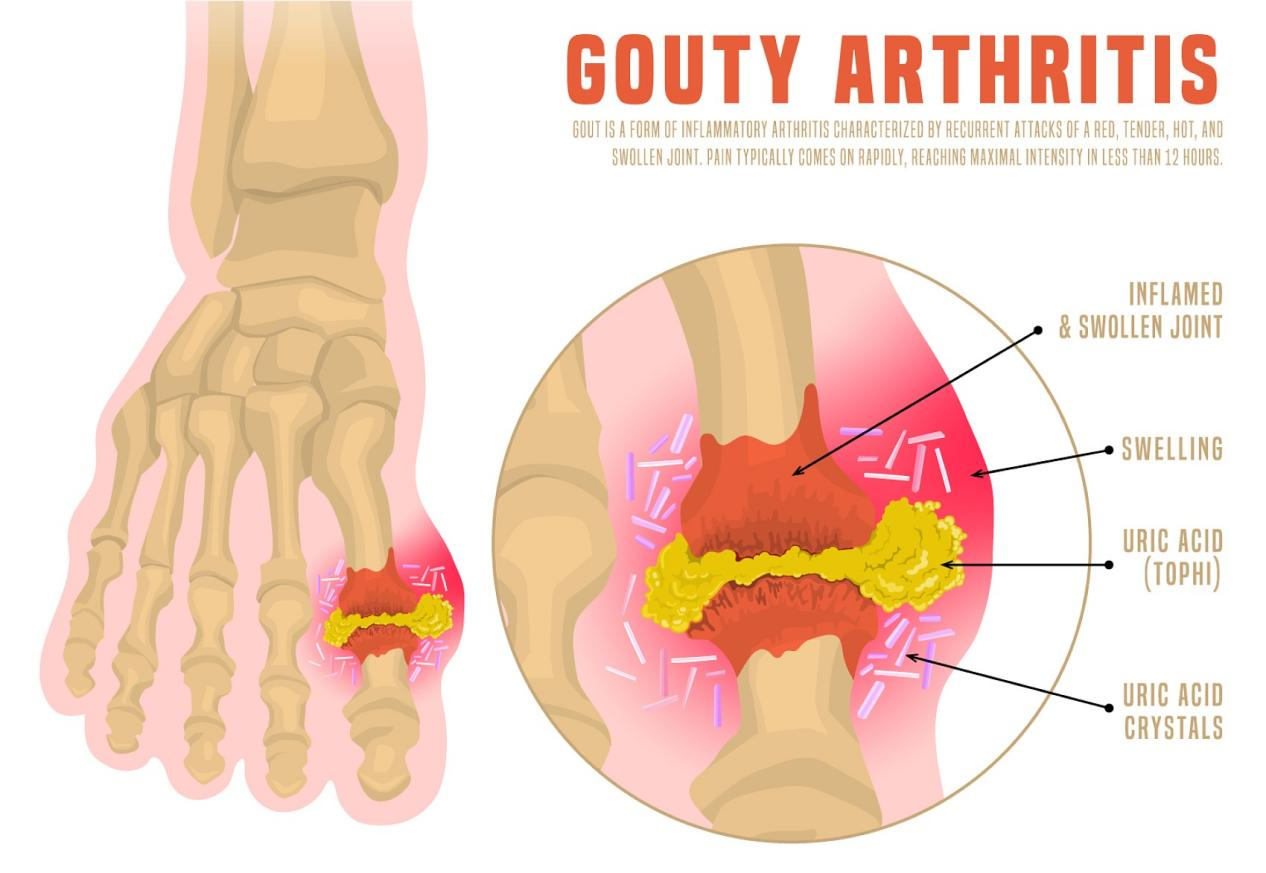
Humans are susceptible to gout precisely because of the unique nature of uric acid metabolism.
Uric acid is a metabolic product of purine, a special nitrogen-containing substance.
Ⅰ.The metabolism of nitrogen-containing substances can be traced back to the very beginning of life
The metabolism of nitrogen-containing substances dates back to the dawn of life.
In the past three billion years, the final products of nitrogen-containing substances have remained largely unchanged.
There are many nitrogen-containing substances in living organisms, primarily derived from amino acids and nucleic acids (such as DNA).
The metabolism of amino acid is the most simplest. For early organisms, which primarily lived in aquatic environments, the metabolism simply required removing the amino group and excreting the resulting ammonia gas.

Amino acid deamination process
The other nitrogen-containing substances can also be converted into ammonia through multiple steps and discharged.
Purines from nucleic acids are particularly special.
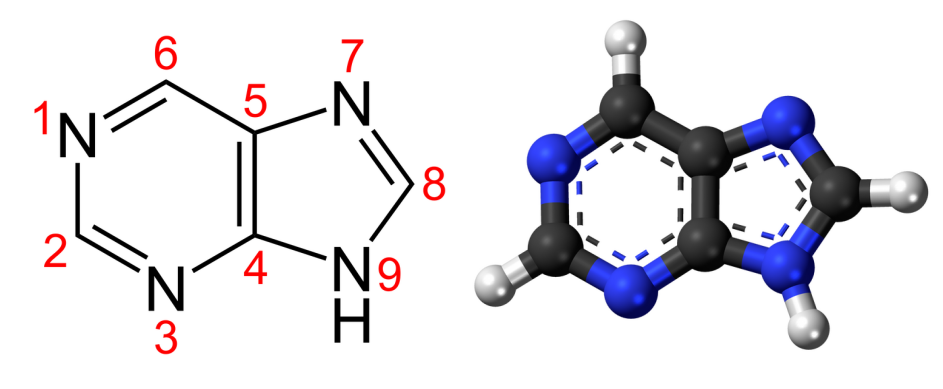
It is a unique bicyclic heterocyclic structure containing four nitrogen atoms.
It is chemically stable, and its structure typically changes only when exposed to strong oxidants, strong acids, or strong bases.
Therefore, purines must first be metabolized into uric acid in our body.
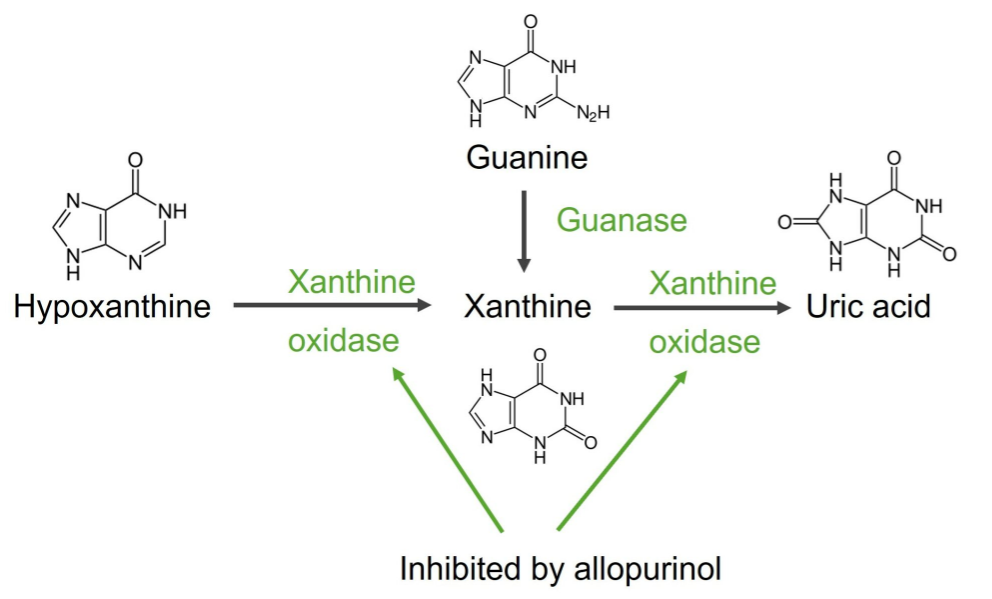
Biochemical process from purine to uric acid
For early organisms, uric acid crystals caused by high uric acid levels not only caused cell damage but also disrupted nucleotide metabolic balance. Coupled with various other evolutionary pressures, early organisms eventually independently evolved uricase, thus gaining the ability to further metabolize uric acid.

The uric acid metabolized into the allantoin under the Uricase catalyzes. Then it is easily soluble in water and can be directly excreted from the body, or it can also be further metabolized into urea or ammonia and excreted from the body [1].
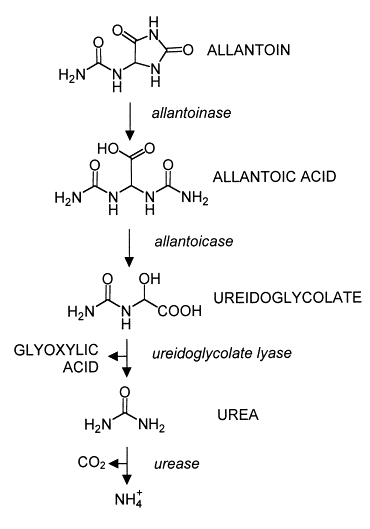
Metabolism of allantoin to urea/ammonia
400 million years ago, when our ancestors were still early fish, their metabolism worked like this:
Almost all nitrogen-containing substances in the body could be converted into ammonia, which was excreted primarily through the gills.
In addition, early multicellular animals evolved a urinary system centered around the nephrons/kidneys to regulate ion balance.
Ⅱ.Landing Turning Point: Adaptive Changes in the Metabolic System
However, 360 million years ago, with the arrival of lobe-finned fish, everything changed.
Early bony fish developed a specialized air sac with capillaries that allowed for oxygen exchange. This allowed them to simultaneously assist breathing and regulate buoyancy, providing the ability to rise and fall. After the lobe-finned fish arrived on land, they evolved their early air sacsinto lungs.[2] The bony fish that remained in the water, after developing into ray-finned fish, eventually evolved their air sacs into specialized swim bladders, specifically for regulating buoyancy.
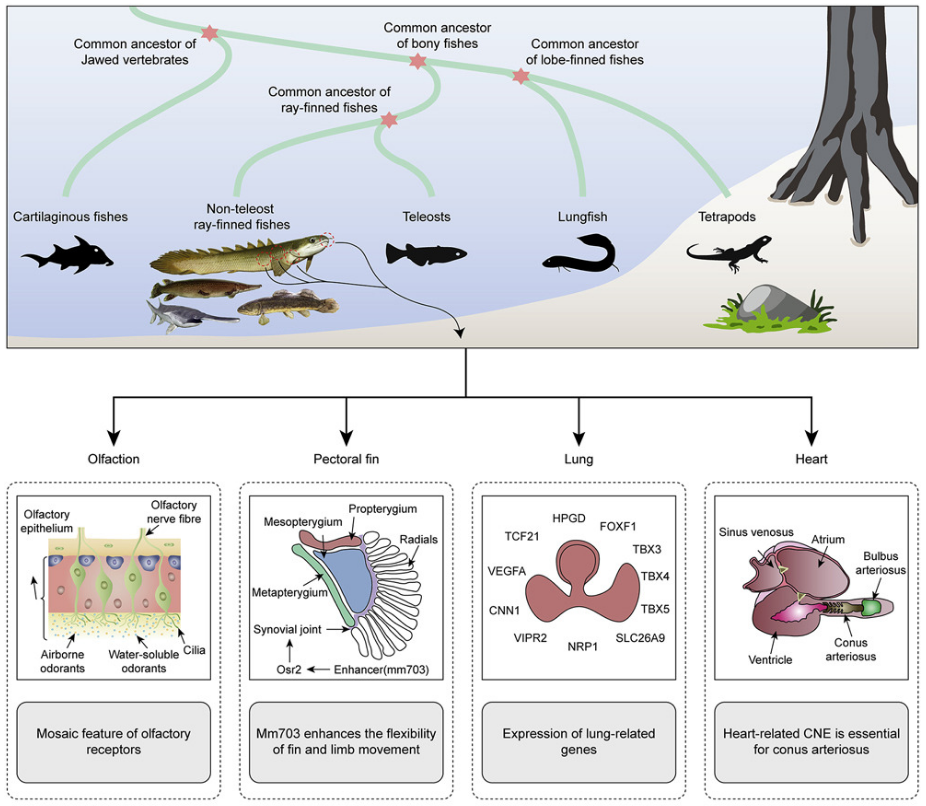
As lobe-finned fish evolved into tetrapods, gills completely disappeared, making them no longer able to metabolize ammonia.
Ammonia's high toxicity forced animals to find other ways to metabolize nitrogenous waste.
The liver and kidneys, which evolved in early animals, played a key role at this time.
Through the repeated elimination and iteration, animals evolved the urea cycle, which metabolizes ammonia into urea.
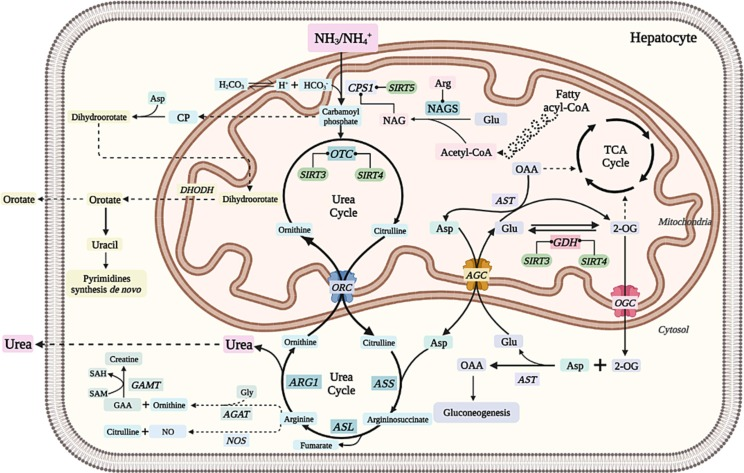
Ammonia (upper left) undergoes a complex metabolic cycle to become urea (lower left). Urea dissolves in water and can be excreted from the body through the urinary system.
Purine metabolism, however, produces water-soluble substances like allantoin and urea before generating ammonia, eliminating the need for the urea cycle.
Thus, although tetrapods gradually moved away from aquatic environments, their metabolism and excretion of nitrogenous wastes necessitated a high reliance on drinking water.
With the emergence of amniotes, whose reproduction was completely independent of water, their descendants evolved in two directions 320 million years ago:
♦Synapsids: Mammals first developed, and then modern mammals developed.
♦Sauropoda: Today's reptiles, birds, and dinosaurs in the history of paleontology all originated from this class.
Synapsids are adapted to relatively humid environments. Amino acids and purines are ultimately metabolized into urea, which is excreted through sufficient water intake.
Most sauropods not only excrete uric acid directly but also convert urea into uric acid, ultimately excreting it as crystals, conserving water and adapting to arid environments.
Ⅲ.Species Game: Metabolic Differences and the Rise and Fall of the "Dragon-Beast Rivalry"
These metabolic differences, along with the changing climate of Earth, directly determined the rise and fall of the dynasties of the Dragon Beast Wars.
298 million years ago, the Carboniferous period ended with the rainforest collapse event, and the Permian period began.
Amphibians, which were highly dependent on water environments, suffered heavy losses. However, the climate was still relatively humid, creating conditions for the great prosperity of synapsids [3].
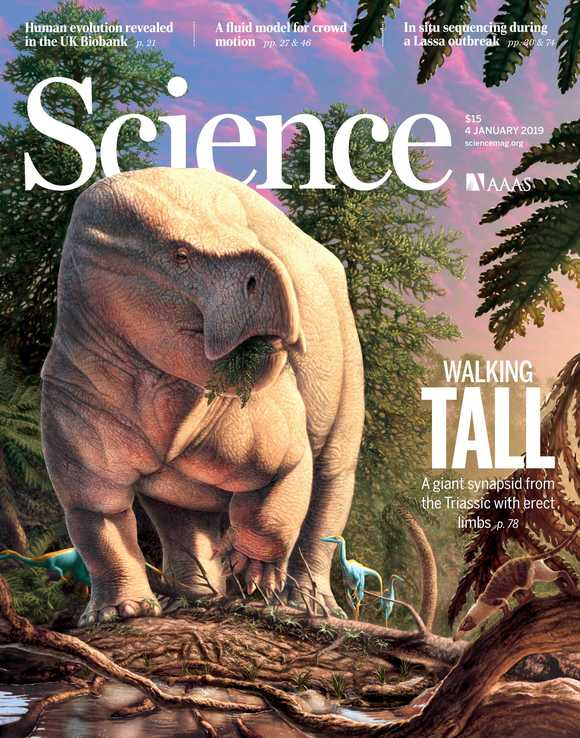
In January 2019, Li Pang featured an early synapsid on the cover of Science magazine.
251 million years ago, the end-Permian extinction event, the most severe of five mass extinction events, struck, severely impacting both synapsids and early vegetation (ferns).
With the beginning of the Triassic period, due to the lack of vegetation, the entire Earth became dry, hot, and low in oxygen. There was even a lack of life near the equator, which was called the "death zone" [4].
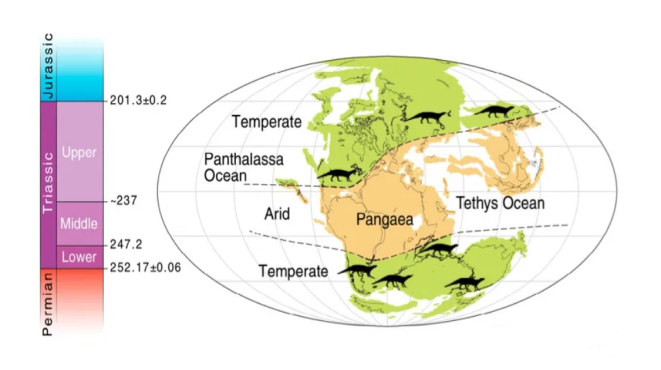
Due to the dry and hot environment, our animal ancestors' higher demand for excretion to become a fatal flaw, leading to a major decline in the species.
Most lizards thrived during the dry Triassic period, as they required little water to excrete uric acid crystals.
Although the climate became wetter again after the Jurassic, the dinosaur dynasty had already gained dominance.
66 million years ago, an asteroid ended the Cretaceous period, bringing
an end to the dinosaur dynasty that had lasted nearly 200 million years.
After the extinction of the dinosaurs, the beasts rose again.
The fully viviparous true beasts originated in 160 million years ago, exemplified by the Sinus jurata.
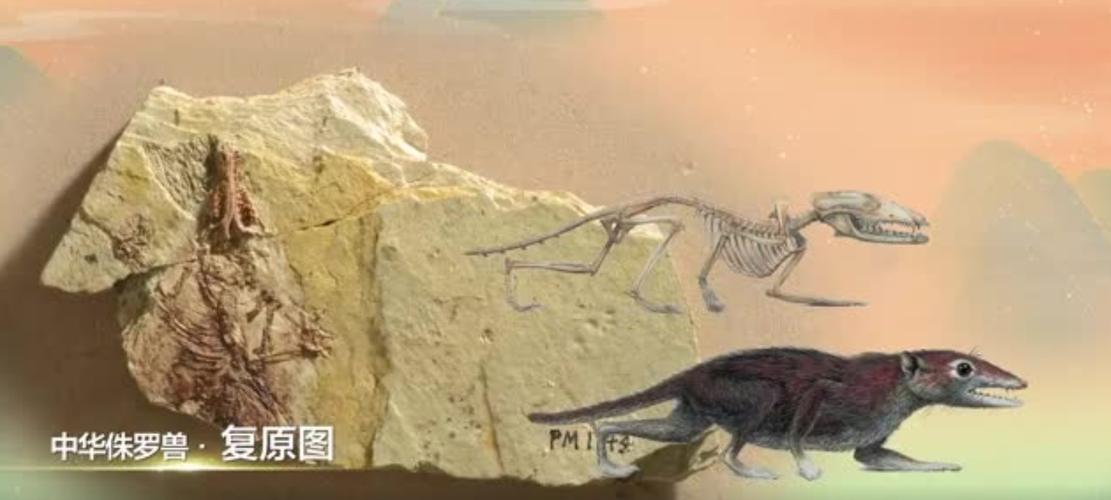
The evolution of mammalian ancestors from oviparity to live birth is actually related to urea metabolism.
During the incubation process of synapsid eggs, urea concentrations accumulate as the embryo grows and develops.
When the concentrations of urea reaches a certain level, the young are left with two options:
Either those remaining in the egg were poisoned by urea, or they emerged from the shell, facing the harsh environment as "premature babies."
After a long period of evolution, live birth eventually developed to increase the survival rate of offspring.
360 million years ago, from the early tetrapods to the rise of mammals, this lineage's purine metabolism was primarily based on urea, which is quite conservative.
Ⅳ.Human gene mutation: inactivation of the uricase gene
The same was true for early primates.
However, around 20 million years ago, genetic mutations that began changed the way early apes metabolized purines.
Our ancestors' uricase gene underwent multiple point mutations (three have been identified) and the insertion/deletion, turning it into a pseudogene and losing the encoding function [5] [6].
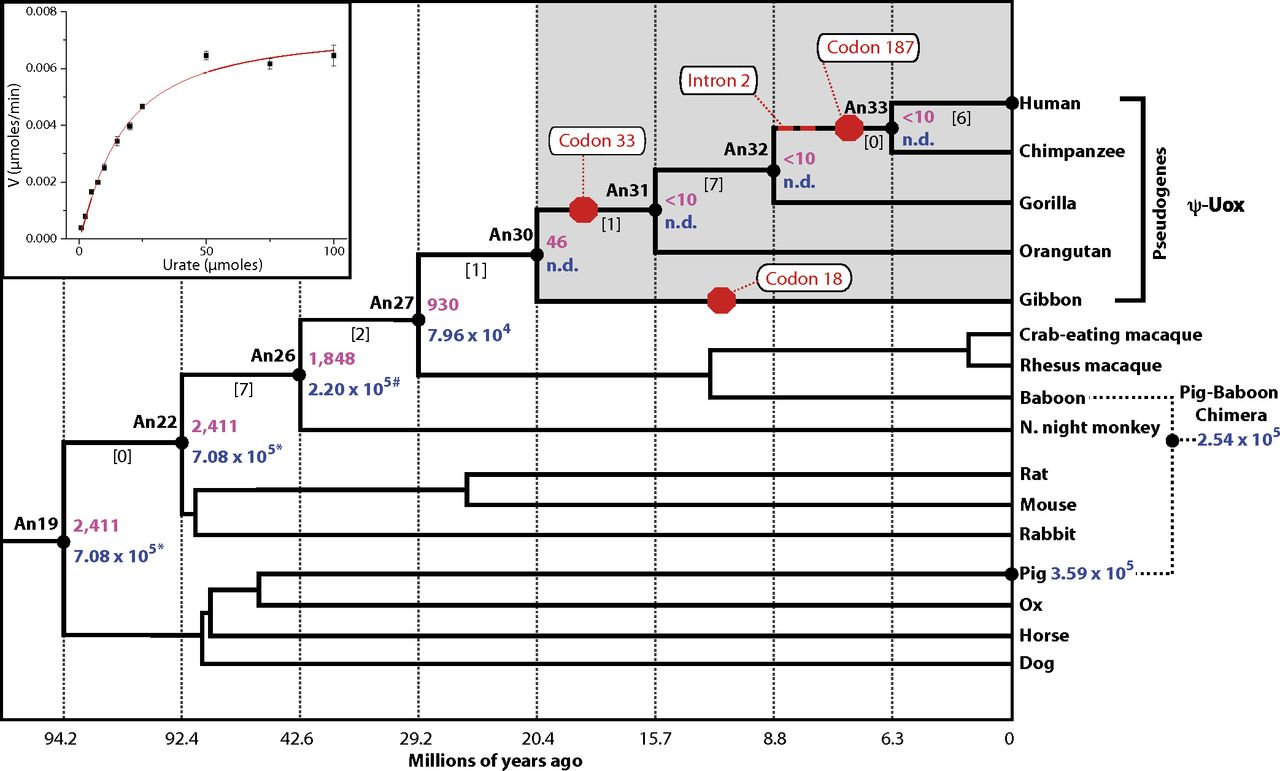
After the human ancestors diverged from the order Carnivora (both of which belong to the order Borealeutheria), uricase gradually weakened until it eventually disappeared (gray area, several key mutations in apes).
Because apes during this period lived in an environment rich in fruits and low in salt, hyperuricemia may have brought survival advantages in terms of glucose and lipid conversion and antioxidants [7].
Or due to genetic effects such as the founder effect, later apes lacked the uricase.
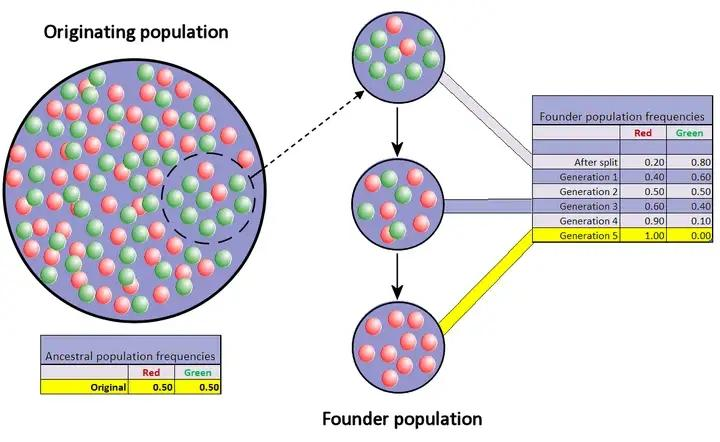
Genetic Drift and the Founder Effect
Although great apes have higher blood uric acid levels (3-4 mg/dL) than other mammals (1-2 mg/dL), gout is virtually uncommon in wild non-human apes due to their low purine intake.
However, with the rise of the human lineage, the diet underwent a dramatic shift, making gout almost exclusively prevalent in humans.
Improved hunting ability and a high-protein, high-purine intake were key to human evolution, but they also led to the development of gout. Gout may have existed at least since the dawn of Homo sapiens. However, because fossils of joints such as toes and fingers are often incomplete, it is difficult to find typical gout.
♦With the emergence of classical civilization, nobles adopted a typical high-purine diet, and gout symptoms appeared in ancient civilizations 4,000 to 5,000 years ago.[8]
♦In modern times, with the varying levels of development in various regions, the excessive intake of purines has led to a rise in the human gout rate from an extremely low probability to 1% to 6%[9].
The range of blood uric acid concentration in healthy adults is 3.5-7.2 mg/dL for men and 2.6-6.0 mg/dL for women[10].
In other words, even for healthy men and women, the blood uric acid concentration is about twice that of other apes and about three times that of other mammals. Men are more likely to develop gout, and the incidence is becoming younger and younger.
♦6.8 mg/dL is the solubility threshold of uric acid. Above this concentration, crystallization begins, and with a certain probability, mild to severe gout will gradually occur[11].
♦If the concentration exceeds 10 mg/dL for a long time, there is a high probability (30%) of developing severe/chronic gout and long-term nodular tissue destruction[12][13].
♦Reaching to 10-15 mg/dL, acute renal failure may occur, which can be directly life-threatening[14].
♦When the concentration is more than 12 mg/dL, it’s usually regarded as the critical value of "potentially critical/requiring special attention"[15].
Note: High uric acid ≠ gout, but high uric acid significantly increases the risk of gout.
In other words, the blood uric acid concentration in gout patients can reach 3 to 10 times that of most other mammals [16].
As for our familiar cats and dogs, this multiple can reach several tens times.
Cats and dogs are separated from us by 90 million years of evolutionary distance. Their uricase is not only functional but also retains much of activity. As a result, their blood uric acid concentration can be as low as 0.1 mg/dL [17][18].
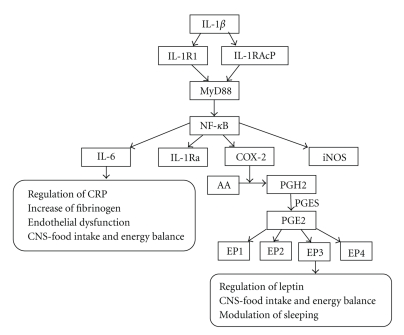
Related target recommendations:
| Item number | Product Name |
| RE10131 | PGE2 ELISA Kit |
| RE1074H | Human IL-1β ELISA Kit |
| RE1074M | Mouse IL-1β ELISA Kit |
| RE1074MF | MF-Mouse IL-1β ELISA Kit |
| RE1074MG | Mouse High Sensitivity IL-1β ELISA Kit |
| RE1074R | Rat IL-1β ELISA Kit |
| RE3186HF | MF-Human IL-6 ELISA Kit |
| RE3186H | Human IL-6 ELISA Kit |
| RE3186HG | Human High Sensitivity IL-6 ELISA Kit |
| RE1060H | Human TNF-α ELISA Kit |
| RE1060HF | MF-Human TNF-α ELISA Kit |
| RE1060M | Mouse TNF-α ELISA Kit |
| RE1060MF | MF-Mouse TNF-α ELISA Kit |
| RE1060R | Rat TNF-α ELISA Kit |
